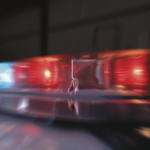In early October 2013, a 911 dispatcher at the Cal Fire and Riverside received a medical emergency call. But she didn’t simply dispatch an ambulance — she saved a life right over the phone.
The caller excitedly told the dispatcher that a person had collapsed and needed help. An engine and ambulance were immediately dispatched to the location, but the dispatcher continued to communicate with the caller, asking a series of questions regarding the victim’s condition. The dispatcher realized that action was needed before the emergency vehicles arrived.
According to the commendation the dispatcher eventually received, “On Oct. 9, you took a call from a reporting party for a patient down in cardiopulmonary arrest. You were able to provide instructions to the reporting party on how to assess the patient for breathing and pulses, while at the same time ensuring that the information was passed on to the transporting ambulance company … you instructed the person on how to perform cardiopulmonary resuscitation on the patient. Largely due to your directions, this patient regained pulse …”
The emergency vehicles arrived at the scene, attended to the victim and raced her to the local hospital. But all of this would have been futile without the dispatcher’s intervention. The dispatcher’s ability to guide the reporting party through CPR enabled the patient to arrive at the hospital with pulses intact, according to Dr. Daved van Stralen, Riverside County’s EMS medical director and Bruce Barton, EMS director.
“Emergency Medical Dispatch is the single biggest improvement to pre-hospital EMS since we put paramedics on fire engines,” said Riverside County Fire Chief John Hawkins. “EMD pre-arrival instructions given by our highly qualified Riverside County Fire Department dispatchers has and will continue to save lives. Patient care is occurring the minute we receive the 911 call … Plain and simple, EMD will save lives.”
This is the dispatch system the Idyllwild Fire Protection District currently uses.
The Emergency Command Center has been located in Perris for decades. It dispatches fire equipment and ambulances throughout the county. In 2012, more than 130,000 calls went to the ECC and 133,300 were directed there last year. In both years, 74 percent of the calls (excluding traffic collisions) involved a medical response. This is the busiest call center in Cal Fire’s system.
In the first three weeks of 2014, nearly 4,600 calls have arrived, which is already 2.5 percent more than a year ago, and medical responses are 82 percent. Last week, the ECC had two different days with more than 400 calls compared to an average day of 360 calls.
The emergency medical priority dispatch system that saved that woman’s life has been operating only since October 2012. In 2011, the Riverside County Board of Supervisors urged county fire and the EMS staff to begin planning and developing the EMD component. Within the county, only Corona and Riverside City dispatch services also incorporate EMD priority systems.
To achieve the new service, the county had to create a new cadre of dispatchers who understood medical emergencies and could determine triage priorities from phone conversations. The cost to create the new component was slightly more than $180,000.
When a medical call arrives at the ECC, a fire engine and ambulance are immediately dispatched to the call location. The EMD then asks a series of scripted questions. Depending on the circumstances, the answers will engage different protocols. The victim could be suffering chest pain, perhaps a heart attack, or there might be bleeding.
Within two to five minutes, the dispatcher collects this information and transmits it to the field unit while it is still en route, according to Battalion Chief Silvio Lanzas, ECC manager. The dispatcher may also ask the caller to take some action until the emergency responders arrive, and may guide them through CPR or direct the taking of aspirin, which occurred for a call during this reporter’s EMD tour last week.
A 1995 study in the “Pre-hospital and Disaster Medicine Journal” concluded, “The EMPDS has high sensitivity in identifying and responding to cardiac arrest calls. The highest priority calls had, on average, approximately one minute faster response than the lower priority calls. This reflects the importance of accuracy in this system, particularly with regard to conditions, such as cardiac arrest where response time is highly correlated with survival.”
ECC is staffed 24 hours a day and seven days a week. The number of dispatchers on duty does vary with the time of day. Peak hours are noon to 4 p.m., when 15 dispatchers are available to take calls. Total staffing approaches 50.
But this is a very stressful occupation. Lanzas, who took command six months ago, already has hired 11 new dispatchers. Every week, at least three calls per dispatcher are reviewed and feedback from the supervisors is shared with the dispatcher.
The front of the ECC room has four big screens locating incidents throughout the county. Each dispatcher has six screens to watch and monitor. Maps, voice transmissions and the appropriate protocol questions appear on different screens.
The mapping is flexible enough that dispatchers can add local landmarks or local nicknames to help them locate a caller.
The National Academies of Emergency Dispatch in Salt Lake City was created in 1988 as a standard-setting organization for the field of emergency medical dispatch. It certifies medical dispatchers and provides continuing education, required annually.
Before implementing the EMD, Lanzas said the dispatchers were always stressed when “hearing people who needed help, but they couldn’t help. Now we’re a part of the solution, not only getting personnel to the scene, but on the phone helping and saving.”










